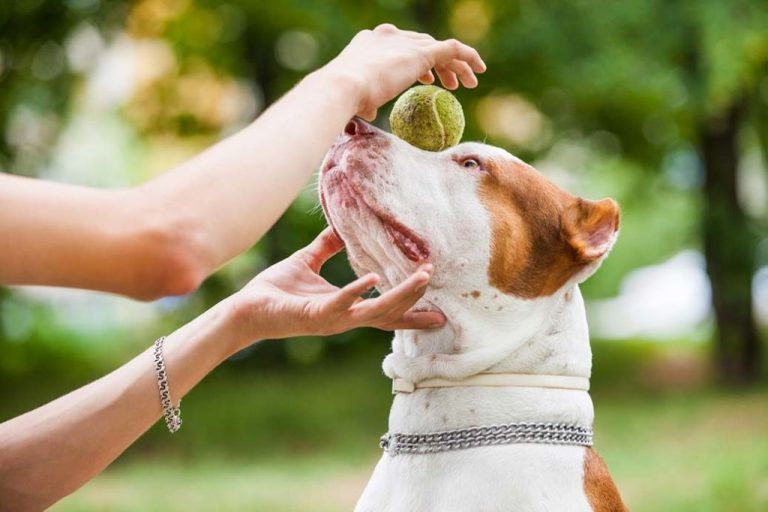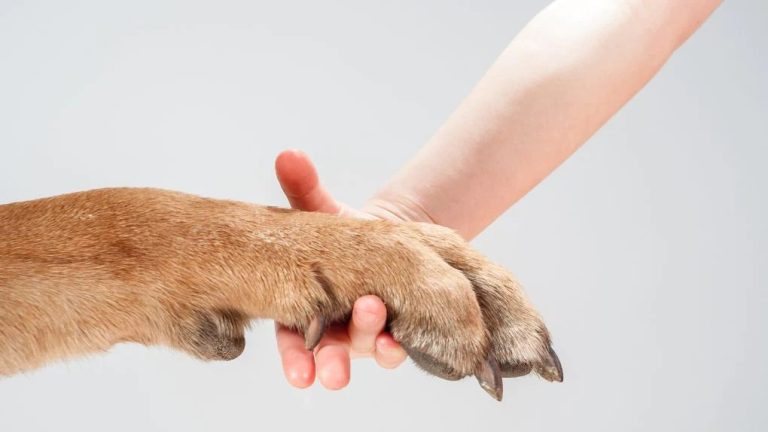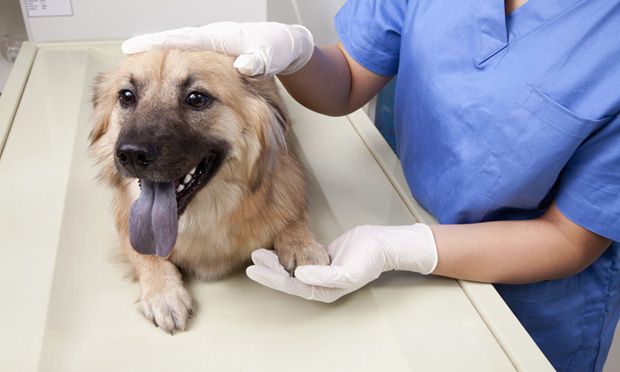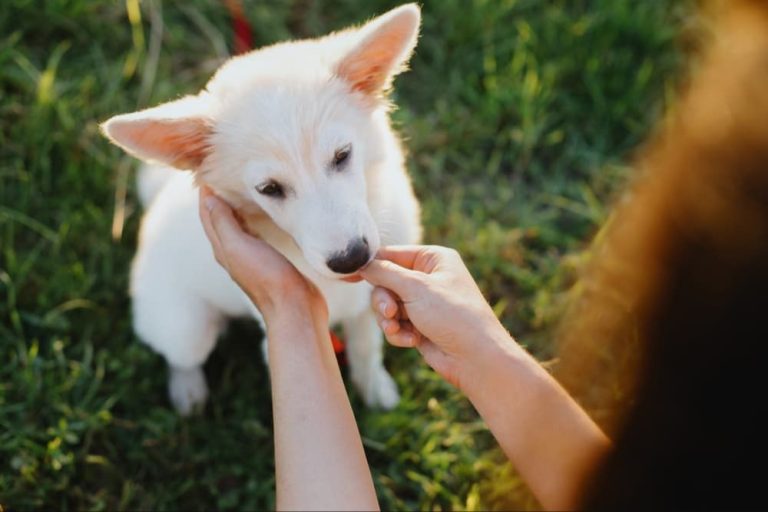Agility Training For Dogs: Getting Started
Introducing Dog Agility
Dog agility is a fast-paced and exciting dog sport where a handler directs their dog through an obstacle course. The aim is for the dog to negotiate obstacles such as jumps, tunnels, see-saws, and weave poles accurately and quickly. It originated in the United Kingdom in the 1970s and made its debut at Crufts dog show in 1978 before becoming an official canine sport in the 1980s.
According to the American Kennel Club (AKC), dog agility was introduced as a demonstration sport in the United States in 1986 and became a fully recognized sport in the AKC in 1994 (History of Dog Agility: The Evolution of the Fast-Paced AKC Sport). It requires dogs to demonstrate skills like speed, coordination, balance, focus, and training while handlers rely on their ability to guide the dog through the course efficiently. Together, the dog and handler must clear the obstacles accurately and quickly, with the goal being to complete the course in the fastest time.
Today, dog agility is one of the fastest growing dog sports in the world, enjoyed by dogs of all shapes, sizes, and breeds. It provides great mental stimulation and exercise for dogs while allowing handlers to build communication and trust with their canine partner.
Benefits of Agility for Dogs
Agility training provides numerous benefits for dogs, both physically and mentally. One of the biggest benefits is the mental stimulation it provides. Going through an agility course requires a dog to think, problem solve, and concentrate. This helps keep their mind engaged and prevents boredom. As dogs complete different obstacles, they build cognitive skills. According to the American Kennel Club, agility strengthens neural pathways in the brain through repetition and problem solving on courses (https://vcahospitals.com/know-your-pet/agility-for-dogs).
In addition to mental exercise, agility provides excellent physical exercise for dogs. Negotiating obstacles like tunnels, jumps, teeter totters, and weave poles gives dogs a full body workout. The physical challenge helps keep dogs in shape, improves endurance, and strengthens bones and joints (https://www.hillspet.com/dog-care/play-exercise/dog-agility-training). Agility helps prevent obesity and weight gain in dogs.
Furthermore, agility training is a great way for handlers to bond with their dogs. Working together on an agility course requires communication, trust, and teamwork between a dog and handler. Dogs build confidence by successfully completing obstacles and earning praise and rewards from their handler. This helps strengthen the relationship and creates a closer bond.
In summary, the key benefits of agility for dogs include mental stimulation, physical exercise, strengthening the bond with their handler, and boosting confidence. Agility provides the perfect combination of mental and physical enrichment for dogs.
Types of Agility Equipment
There are several key pieces of equipment used in dog agility training and competitions. Some of the most common obstacles include:
Tunnels
Tunnels, often made of flexible plastic or fabric, are tubes suspended above the ground that dogs must crawl through. They help dogs overcome fears, build confidence, and improve coordination (AKC, 2022).
Seesaws
Seesaws are moving platforms that tilt from side to side as the dog walks across. They require dogs to carefully balance their weight while remaining focused (Rookie Road, 2021).
Weave Poles
Weave poles are upright poles placed in a straight line that dogs must weave in and out of in a snake-like pattern. Weaves test agility, speed, and training (Puppy Institute, n.d.).
Jumps
Jumps are hurdles of varying height that dogs must leap over cleanly. They build muscle strength and athleticism.
A-Frame
The A-frame is a pair of planks joined in the middle to form an A shape. Dogs must scale the ramp up and walk down the other side. It develops confidence and coordination.
Ideal Breeds for Agility
Certain breeds tend to excel in agility competitions and training due to their high energy levels, athleticism, intelligence, and eagerness to please. Some top breeds for agility include:
- Border Collies – Extremely energetic, smart, and trainable. Often considered the ideal agility breed. They live to run and jump and require lots of mental stimulation. Source
- Shetland Sheepdogs – Athletic herding dogs with lots of energy and stamina. Eager to learn and highly trainable. Their smaller size helps in tight turns.
- Jack Russell Terriers – Small, extremely energetic dogs bred to hunt vermin. They love challenges and learning new tricks. Their size gives them an advantage.
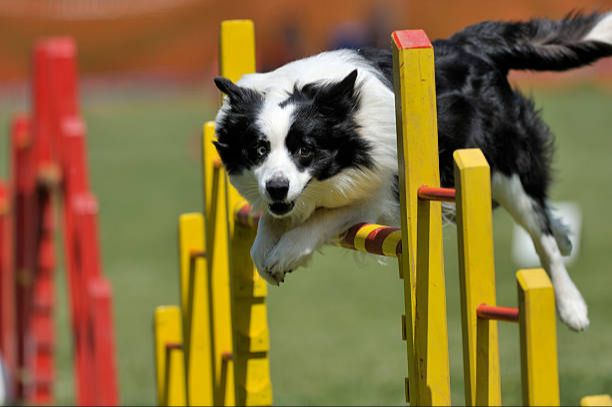
Other energetic breeds like Australian Shepherds, Standard Poodles, and Papillons can also make excellent agility dogs. The key is finding a breed that is energetic, driven, and focused enough to handle all the stimulation of an agility course. Avoid low energy or stubborn breeds.
Age to Start Agility Training
It’s never too early to start teaching puppies the foundations for agility. Simple exercises like targeting and rewarding focus and impulse control can begin as early as 8-12 weeks old. However, most training facilities and competitions require dogs to be around 12-18 months old before beginning formal agility classes and trialing (Spirit Dog Training, 2021).
Young puppies have soft growing joints and should avoid high impact activities. But you can start training puppies as young as 8 weeks old to climb ramps, go through tunnels, weave poles, and do other low impact obstacles. Increase time and intensity gradually as the puppy matures. Avoiding excessive impact while bones are growing can help prevent future joint issues.
Around 12-18 months old, puppies have passed through the most intense growth phases and have enough focus and impulse control to begin formal agility classes. At this age, dogs can start sequences involving jumps, A-frames, seesaws and other agility equipment. They are physically ready to handle the impact and challenges of a full agility course (Tug-E-Nuff, 2022). However, training should still progress gradually to avoid overwork while the dog is maturing.
In summary, foundation training can start early but dogs are not ready for full agility competition and classes until around 1 year old. If you start slowly and focus on control, an agility puppy will progress smoothly into formal training when physically mature enough.
Basic Skills Needed
There are several key skills dogs need to develop before starting agility training according to experts. The most important are focus, motivation, confidence, and handling skills.
Focus is crucial in agility as dogs need to pay attention to their handler amid many distractions on an agility course. Building focus through reward-based training helps reinforce paying attention to cues. Using high-value rewards like toys or treats can help keep a dog’s focus. Starting focus training in low distraction environments then building up to more challenging ones is recommended. Training focus on handler, not environment is the ultimate goal.
Motivation and drive are also essential. Dogs need to want to work and engage in agility activities. Using play, praise, or rewards to make training fun builds drive. Letting a dog chase a toy after completing an obstacle can create energy and enthusiasm. Building confidence through progressive training also boosts motivation.
Developing confidence in dogs is key before advanced equipment training. Getting comfortable with lower obstacles like tunnels, ramps and low jumps initially can set them up for success. Taking training slowly and mastering basics first builds confidence to progress to new challenges.
Finally, handler focus and developing trust are critical. Dogs need to learn to respond reliably to verbal cues and body language during sequences of obstacles. Clear, consistent handling and rewards mark correct responses. Mastering these fundamental skills forms a strong foundation for agility training.
Where to Take Classes
When looking for agility classes for your dog, you have several options depending on what’s available in your area. Some of the most popular places to take agility classes include:
Local Training Clubs
Many cities and towns have local dog training clubs that offer agility classes. These clubs are often staffed by experienced agility handlers and instructors. They usually have their own indoor training facilities with agility equipment and offer group classes at various levels from beginner through advanced competition classes. Training clubs allow you to learn alongside other local agility enthusiasts.
Pet Stores
Some pet supply stores, like Petco and PetSmart, offer beginner agility courses. These classes provide an easy introduction to the sport. The equipment may be limited compared to a specialized training facility. But pet store classes can be a good option for basic skills and socialization before moving to a more advanced program.
Dog Sports Facilities
Dedicated dog sport training centers are becoming more common, especially in larger cities. These businesses focus specifically on agility, with professional instructors, specialized equipment, and options for private lessons or group classes. They offer a full progression of agility courses from foundation skills through competition handling.
What to Look for in a Class
When looking for a dog agility class, it’s important to find one that emphasizes positive reinforcement. According to the American Kennel Club, agility should be fun for both you and your dog. Harsh training methods like corrections or punishment can create stress and damage the handler-dog relationship. The best classes use praise, play, and food rewards to motivate dogs during training.
Additionally, the instructor’s experience matters. Look for a class taught by an experienced agility competitor or certified agility instructor. They will understand how to introduce equipment safely and build skills incrementally. An novice instructor may progress too quickly or utilize improper training techniques. Experienced instructors also offer guidance on handling skills, course strategy, and trial preparations.
The emphasis should remain on relationship-building between handler and dog. While agility involves guidance through courses, the handler and dog must work as a cohesive team. A skilled agility instructor provides as much guidance to the handler as the dog. They help handlers learn to communicate effectively with their dogs during sequences. This develops the coordination and partnership critical for success.
At-home Training Tips
You don’t need fancy equipment or a training facility to start agility training with your dog at home. Focus on setting up mini agility courses and working on basic skills to build the foundations for agility success.
Set up a simple mini course in your backyard using household items or makeshift equipment. Use upside down buckets or plastic tubs for platforms, arrange poles or broomsticks as weave poles, and lean a plank against a step to create a ramp (AKC). Rotate and change the setup frequently to keep it interesting and challenging for your dog. Reward your dog for navigating the obstacles successfully.
In addition to equipment, work on fundamental skills like recalls, stays, targeting, and handling cues. Help your dog get comfortable wearing a collar and lead so they can focus during training. Use treats, toys, or praise to reinforce wanted behaviors. Keep training positive and fun! With regular short sessions, you’ll both build skills and confidence for future agility trials.
Preparing for Your First Competition
Getting ready for your first agility trial can feel overwhelming, but being prepared and having a plan will help you and your dog have a positive experience. Here are some tips for registering and getting ready:
Registering – Make sure to register by the deadline, which is usually 1-2 weeks before the trial date. Read the premium or event listing closely to determine what classes you can enter based on your dog’s experience level. Submit your entry form and payment according to the instructions.
What to bring – Have all required paperwork like your dog’s vaccination records. Pack potty bags, treats, toys, a crate, water bowls, and anything else to keep your dog comfortable. Bring shade/shelter if competing outdoors. Have handy your confirmation email with run order information.
Handling nerves – Expect some nerves before your first run! Take deep breaths and focus on having fun with your dog. Chat with other competitors to get tips and cheer each other on. Remember it’s about the journey and bonding with your dog.
To help prepare, read this advice from the AKC: Entering Your First Agility Competition. With planning and practice, you and your dog will be competition ready!

